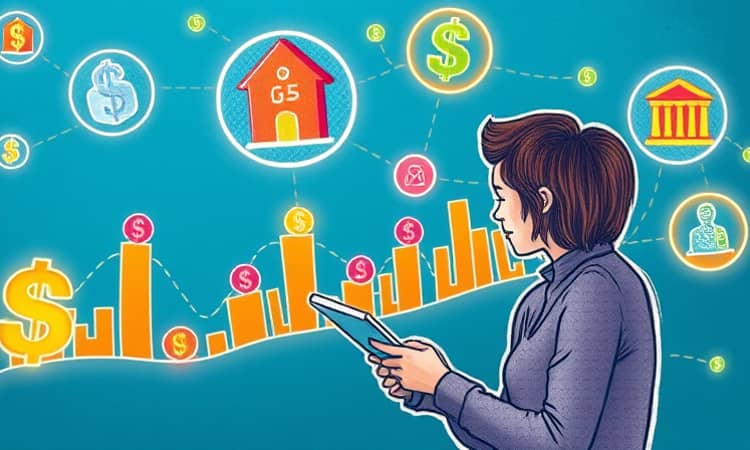In todays fast paced world managing personal finances can feel overwhelming. With expenses across multiple categories and accounts its easy to lose track of where money goes. The rise of AI-driven transaction categorization accuracy and integrated banking dashboards offers a solution that transforms expense review into an empowering experience.
What are Bank Analytics Tools?
Bank analytics tools are digital features built into banking apps that help individuals track categorize and analyze their spending. By leveraging data analytics such as reporting automation visualization machine learning and predictive analytics users gain actionable recommendations to reduce expenses and master budgeting with ease.
These tools bring together transaction records across checking savings and investment accounts so that every purchase and payment is neatly organized. No more manual entry or unclear spreadsheets driving frustration.
Imagine a busy professional juggling rent groceries and utilities. With every transaction automatically categorized you can glance at a holistic financial snapshot each morning and adjust spending before overspending occurs.
These solutions often offer receipt photo uploads to match transactions and keep digital records tidy for tax time or expense reimbursement.
How These Tools Work
At the core of these solutions lies automated transaction categorization with AI. Leading banks now classify purchases into categories like groceries dining and utilities with over 85 percent accuracy. Some apps even allow custom categories and integrate receipt scanning for full detail.
Real time budgeting features complement categorization by sending real-time notifications when approaching limits. Users set spending targets for specific categories and receive alerts before overspending occurs. Immediate notices for large transactions upcoming bills and suspected fraud add extra security.
- Expense tracking and categorization across all accounts
- Budget settings with instant alerts
- Interactive charts comparing current to past spending
Machine learning models continuously improve categorization by learning from user edits. The more a user customizes a category the smarter the system becomes offering near perfect classification over time.
Predictive features can also project cash flow for upcoming weeks based on historical patterns. By anticipating potential dips in balance users avoid overdraft fees and maintain healthy account levels.
Key Features and Top Providers
Many leading providers offer comprehensive solutions. Ally Bank Capital One SoFi and Regions Bank deliver robust mobile first apps while platforms like Mint and Personal Capital focus on holistic wealth management. Each service emphasizes intuitive visual dashboards and charts to make data accessible.
Benefits and Real-World Impact
Users who adopt these tools report comprehensive real-time spending overview and greater control over their finances. Research shows a 42 percent rise in daily engagement when apps include visual data dashboards. Long term engagement climbs by 37 percent once AI categorization cuts manual effort.
Charting expenses against goals encourages accountability making it easier to stick to budgets month after month.
One user reported savings over five hundred dollars by following spending reduction suggestions. Personalizing budgets led to unexpected savings that funded a dream vacation without going into debt.
- Improved control over spending
- Identification of budget leaks such as forgotten subscriptions
- More achievable savings goals with targeted advice
- Better preparedness for recurring expenses
Challenges and Considerations
While powerful these solutions are not without drawbacks. Feature rich apps can feel overwhelming especially for first time users. Legacy regional banking apps may lack modern interfaces leading to confusion.
Data privacy policies vary between institutions so reviewing terms is crucial. Some users worry about sharing sensitive data across platforms even with robust encryption in place.
Device compatibility can also pose a barrier. Older smartphones or unsupported browsers may limit access to mobile first features leaving users stuck on outdated interfaces.
Balancing convenience with secure data privacy and governance remains an ongoing concern for many account holders.
Future Trends in Personal Finance Tech
Emerging trends include deeper AI integration to refine categorization and reduce manual edits. Predictive analytics now not only forecast spending but also suggest how much to transfer to savings based on surplus patterns.
Data aggregation continues expanding as users link not only bank accounts but also investment services and digital wallets. Automatic receipt scanning powered by OCR will soon become standard while voice interfaces may let users query spending by speaking.
Integration with voice assistants may let users ask about their weekly spending while driving or cooking. Augmented reality could overlay spending data onto real world objects guiding decisions at point of sale.
Open banking initiatives will empower users to aggregate data across banks globally increasing transparency and competition among providers.
Getting Started Tips for Users
Start small by exploring a single category like dining or entertainment before expanding to all accounts. Gradual adoption ensures you remain comfortable with new features without feeling overwhelmed.
Choosing the right tool depends on individual needs. Follow these practical steps to begin your journey towards financial clarity.
- Review your current banking app for built in analytics features
- Link external accounts for a holistic view
- Set clear budget categories and realistic spending limits
- Enable notifications for important transactions
- Regularly review personalized insights and recommendations














